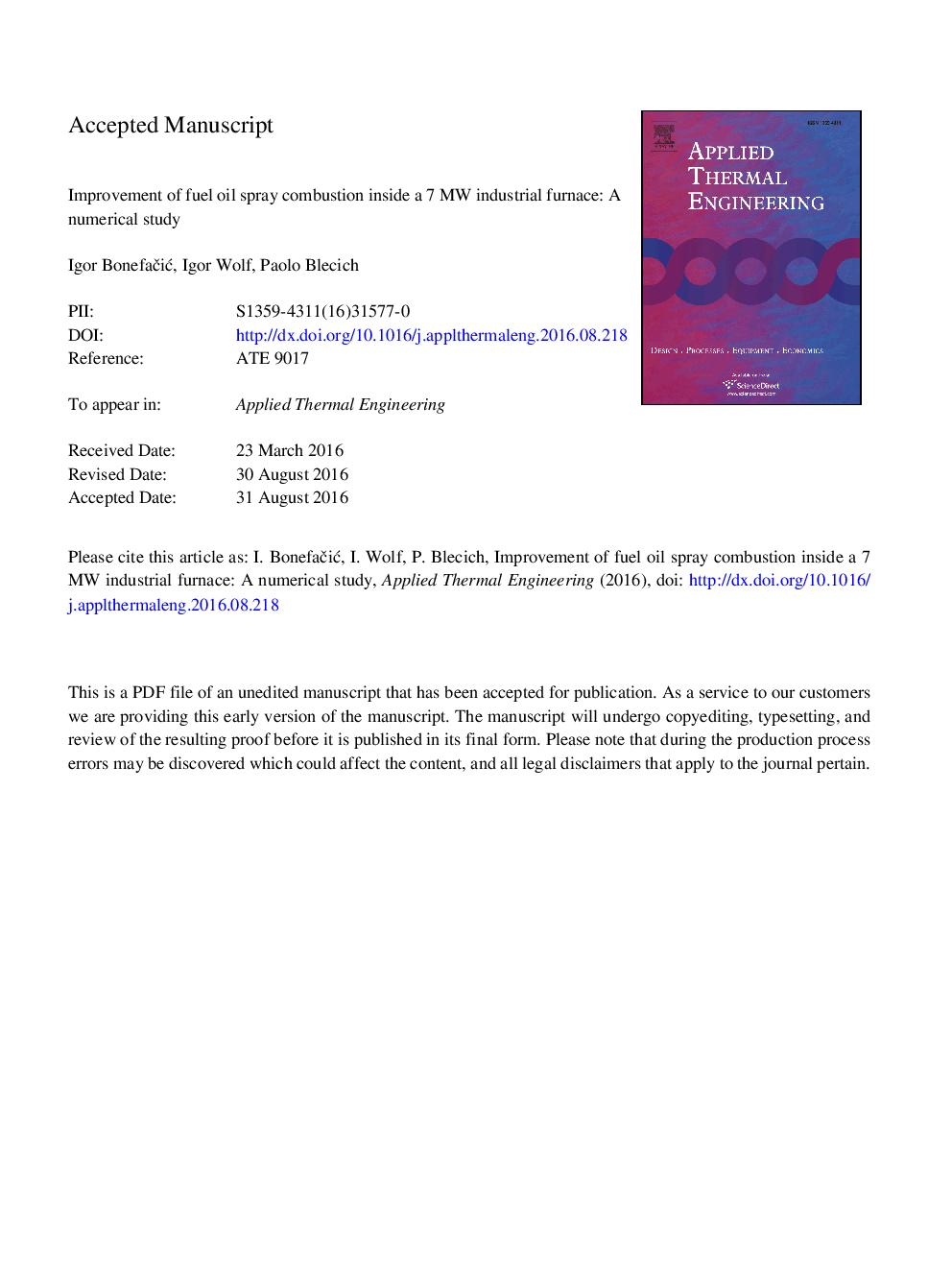| Article ID | Journal | Published Year | Pages | File Type |
|---|---|---|---|---|
| 4992063 | Applied Thermal Engineering | 2017 | 20 Pages |
Abstract
This paper presents a numerical analysis of fuel oil spray combustion inside an industrial furnace. The industrial furnace is a 7Â MW cylindrical furnace which supplies heat to an oil refinery. The commercial CFD software Fluent is used for modeling transport and reaction processes in the furnace. The chosen combustion model is validated against measurement data available in the literature and good agreement is achieved. Fuel oil spray combustion is improved by varying fuel and burner parameters such as relative air-fuel ratio, fuel droplet diameter, fuel spray half-angle and burner swirl number. These parameters affect the flame shape and stability, on which depends the performance of the industrial furnace, particularly the heating output and gas species emissions. The numerical analysis revealed that complete combustion and minimum fractions of unburnt species are obtained by lean air-fuel mixtures, highly swirling flows, wide fuel spray angles and small fuel droplets. On the other side, the highest furnace heating outputs are achieved for near-stoichiometric air-fuel mixtures, narrow fuel spray angles, swirl numbers between 0.6 and 1.0 and small fuel droplets.
Related Topics
Physical Sciences and Engineering
Chemical Engineering
Fluid Flow and Transfer Processes
Authors
Igor BonefaÄiÄ, Igor Wolf, Paolo Blecich,
